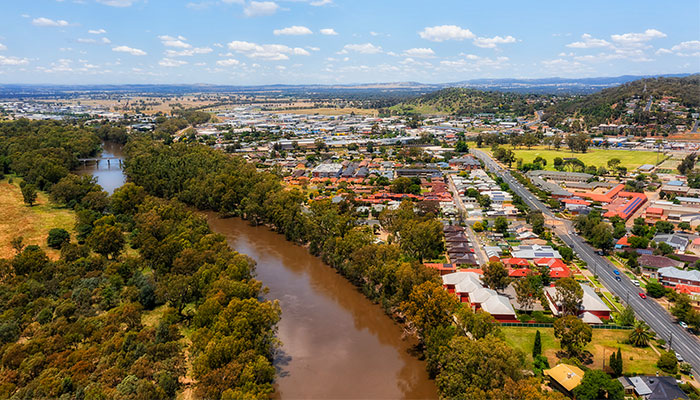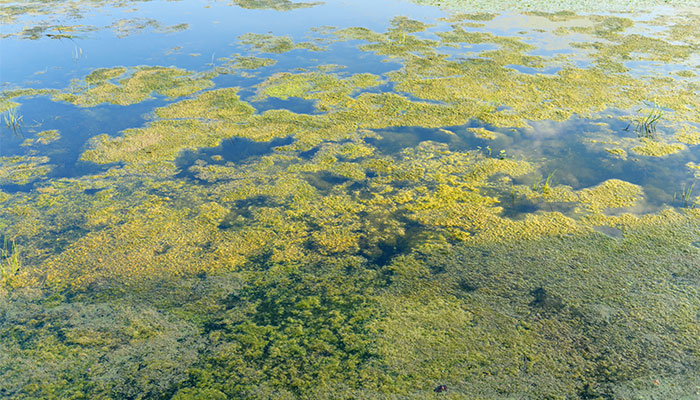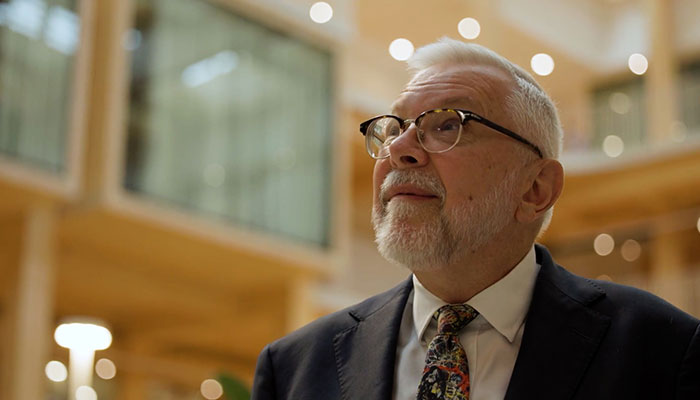Researchers from Macquarie University are preparing to visit Wagga Wagga this week to talk to local clinicians and community members as they launch the first stage of the NSW MND surveillance project.

Cluster: The NSW Riverina region has an unusually high incidence of MND, which experts say has likely links to the use of agricultural chemicals making their way into inland waterways.
Located on the Murrumbidgee River, Wagga Wagga is in the Riverina growing region, which is becoming known among neurologists as an MND hot spot.
Professor of Neurology, Dominic Rowe AM, has been treating patients with MND for 27 years, and leading the multidisciplinary MQ Health MND Clinic in Sydney’s north for the past 15 years.
In that time, MND has increased as a cause of death in Australia by 250 per cent, up from one in 500 deaths to one in 200.
While in Wagga Wagga, Professor Rowe will lay the groundwork to establish contact with MND patients in the region, but also to raise awareness among clinicians.
“It’s important for people to know there is an increased rate of MND in the area and to be on the lookout for early symptoms of the disease, like weakness in the arms and/or legs and slurred speech, because they can easily be mistaken for other conditions,” he says.
“I currently have 16 patients in the Riverina, and I’m sure there are more people in the area who we don’t know about.
“This is already above the percentage you would normally expect to see in a population of 160,000.
“We know MND cases are rising around the country, and we also seeing it more often in younger people, with an increase in patients being diagnosed in their forties when we used to see them in their fifties or sixties.”
Also known as amyotrophic lateral sclerosis (ALS), MND causes the progressive loss of the neurons that allow the brain and spine to communicate with the muscles.
In its early stages, patients experience muscle weakness, but as the disease progresses, they lose the ability to walk, speak, swallow and breathe unaided.
There are few treatments available that slow the progression of MND. On average, patients survive a little over two years after being diagnosed.
The agricultural link
Identifying clusters has long been stymied by the fact that MND is not a notifiable disease, Professor Rowe says.

Fact finding: Professor Dominic Rowe is holding the first of a string of community meetings around the state in Wagga Wagga this month to track environmental pollutants, algal blooms and patient data in the riverside region of NSW.
That distinction has generally been reserved for contagious diseases, even as it has become increasingly clear that sporadic MND – the non-inherited form that accounts for about 90 per cent of cases – has strong environmental links.
Because of this, the data is fragmented, locked away in the medical records of individual patients and their treating doctors.
Professor Rowe has received a $1 million grant from the NSW Government to set up the country’s first MND surveillance centre at Macquarie University, turning patient and environmental information into detailed maps.
The team has already created a map using data based on data from 1300 past and present patients treated at the MQ Health MND Clinic using post code data.
Being able to map MND cases is vital to communities like ours, because people need to know there is an increased risk.
It is already showing higher numbers of cases in the Riverina, and also around Newcastle on the state’s Central Coast.
“MND can occur anywhere, but our observation is there are clusters far above the expected incidence and prevalence in areas around rivers and lakes, and as the heat map grows, we’re expecting it to reflect that,” Professor Rowe says.
“All of this comes down to what we are doing to our environment.
“There are multiple potential triggers for this disease, but one of the big ones is agricultural chemicals.
“People can come into contact with them directly if they work on farms, but they are also in the run-off that washes into our waterways.
“This run-off contains high concentrations of herbicides and synthetic pesticides that are neurotoxic to both insects and humans, plus nitrogen from fertilisers.
“Nitrogen promotes algal blooms in the waterways, and many algal species, like blue-green algae and red algae, contain cyanobacteria that have also been linked to MND.
“And we are seeing hundreds and hundreds of these blooms around the state and around the country every summer.”
Joining the dots
The community meeting in Wagga Wagga is just the first such visit planned around the state.
As part of its research, the surveillance project will collect biological information to track environmental pollutants and algal blooms, and patient data that may hold clues to the cause of their illness.
This includes where the person was living at the time of the onset of symptoms and diagnosis, where they lived in the years before that (when they were likely to have been exposed), what they did for work, and their leisure activities.

Toxic: Algal blooms such as the one pictured above can be contaminated with chemicals and bacteria which can be harmful to insects and humans, Professor Rowe says.
Previous work with agricultural chemicals is often a link between people diagnosed with MND, as is taking part in certain water sports.
Sports like waterskiing create a fine spray of droplets that can be forced up the nose, which becomes a problem when the water is contaminated with chemicals and/or cyanobacteria from algal blooms.
Wagga Wagga-based Associate Professor Martin Jude is the only full-time neurologist in the Riverina, and he is acutely aware of the region’s increased incidence of MND based on his own experience. He has been working closely with Professor Rowe to refer patients and share information.
“Being able to map MND cases is vital to communities like ours, because people need to know there is an increased risk,” Dr Jude says.
“In the past 30 years, I’ve treated dozens of patients with MND in the Riverina. I’m watching the number of new cases rise every year, and I’m seeing them get younger.
“We already know the likely causes of this disease, and now we need to work towards preventing it and stopping more families from losing their loved ones.”
For more information about the MND Surveillance Centre, please contact mnd_surveillance@mq.edu.au
Professor Dominic Rowe AM is the Foundation Professor of Neurology at Macquarie University, a Director of the Macquarie University Centre for Motor Neuron Disease Research and leads the MQ Health MND Clinic and the Macquarie University MND Clinical Trials Unit.



